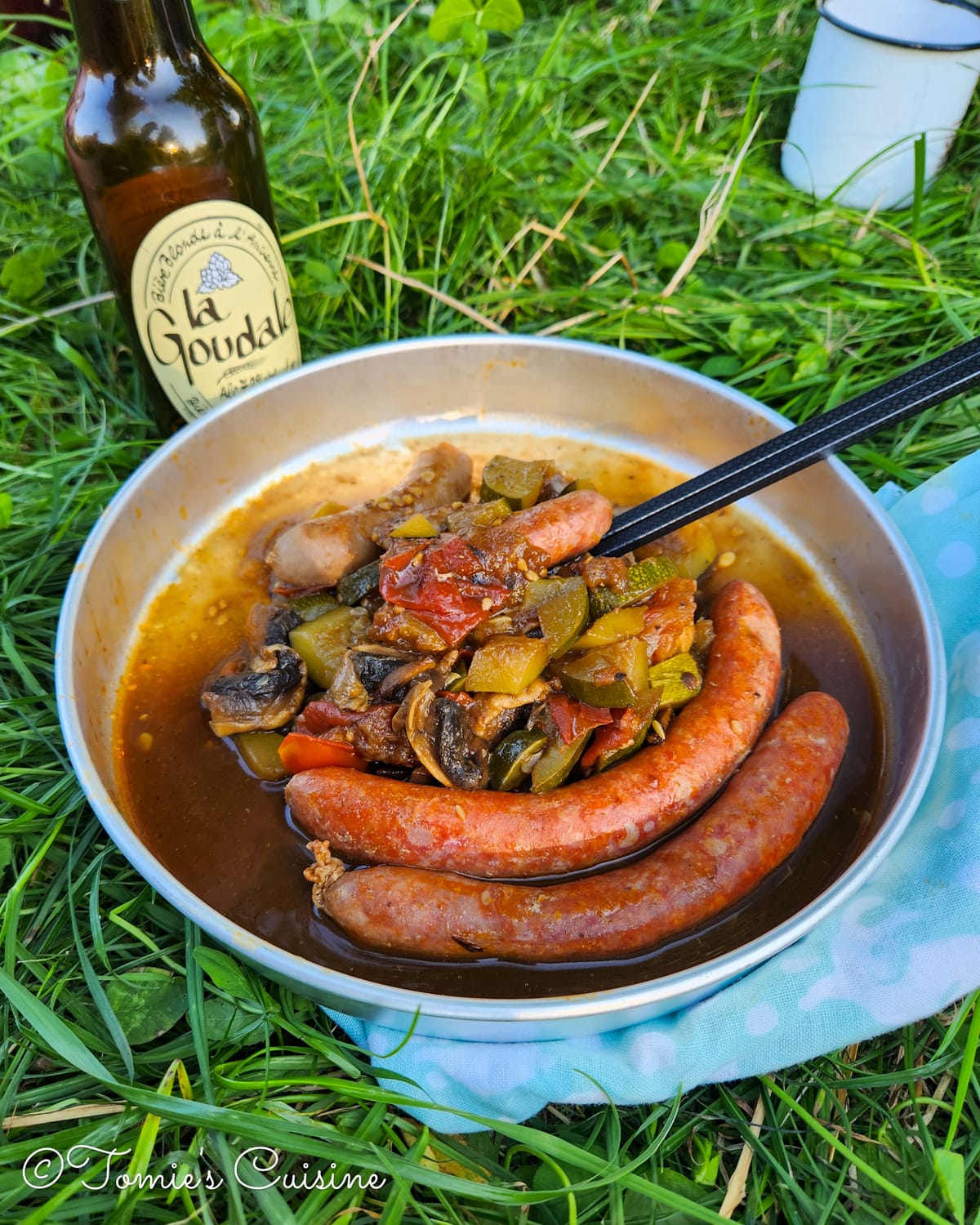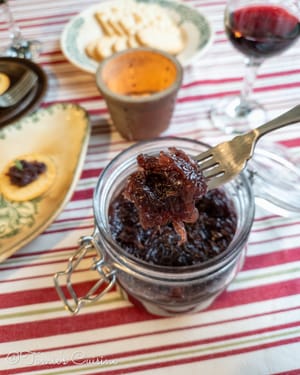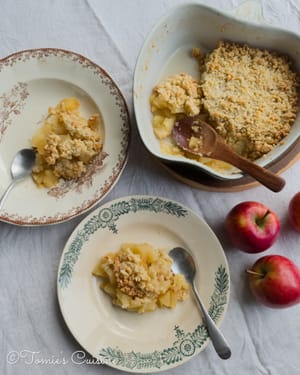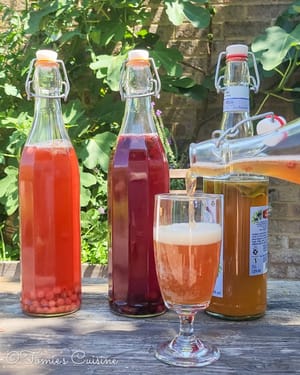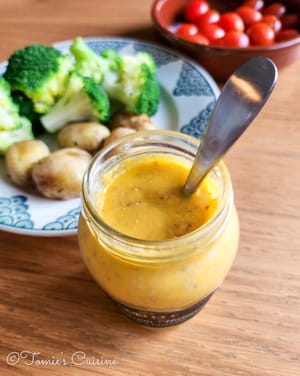We went on a (roughly) ten-day hike in July, and since we prepared some food in advance and experimented with a few different recipes, it is worth an article!
Homemade granola
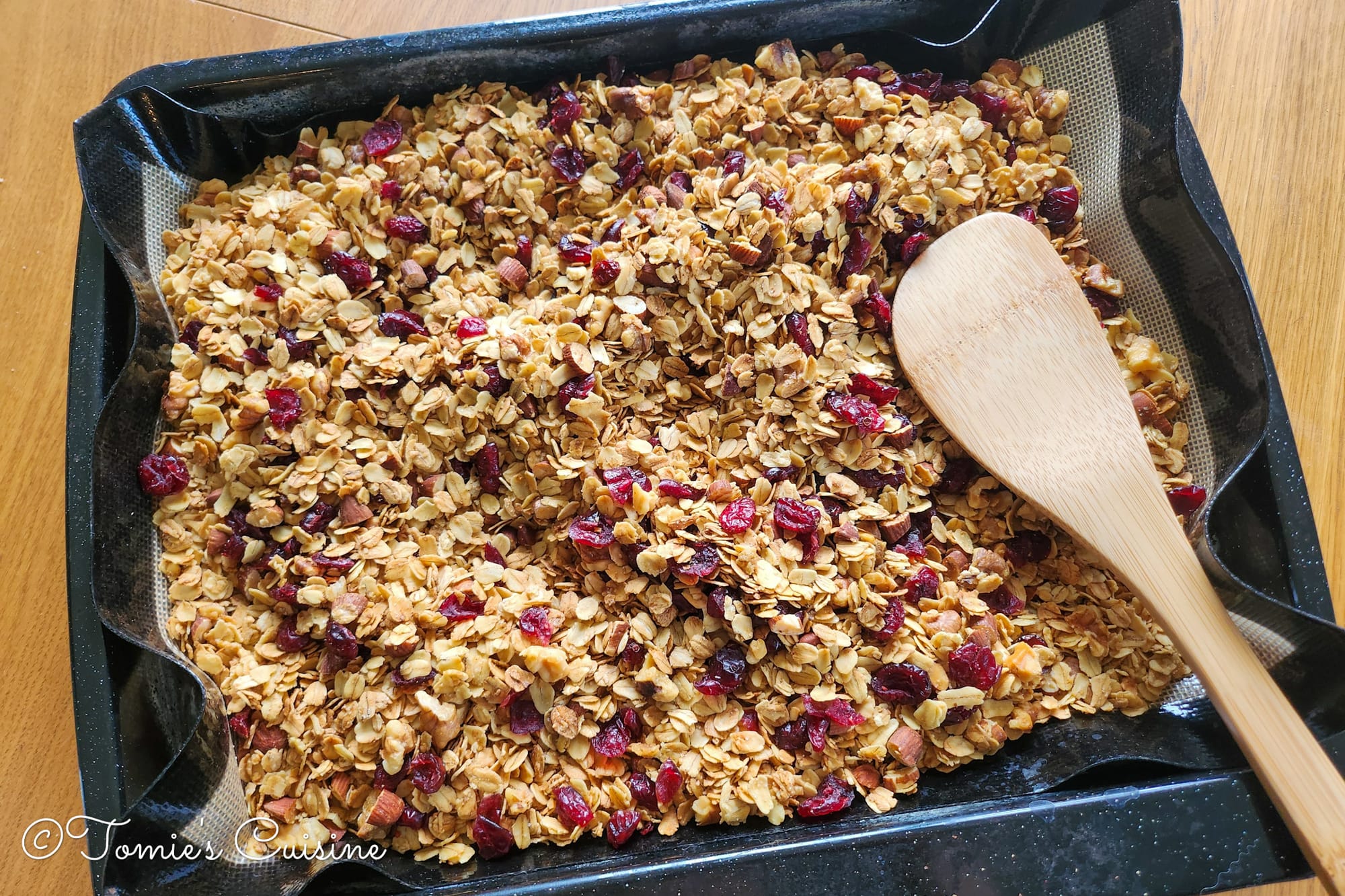
I made some granola to bring with us for hiking as breakfast. It contains oats, chia seeds, cranberries, almonds, walnuts, rapeseed oil, maple syrup, and a pinch of salt. This granola is fantastic! I tasted it, then couldn’t stop myself from eating it. I need to make another batch to share with everyone else. It's not too sweet, light, and nutty. Hmmmmm.
The recipe is on our blog post here: Easy Homemade Granola Recipe.
We had the granola for breakfast. It was chilly in the mountains in the morning, so I added some warm milk (powdered milk with hot water). It was a little like porridge, and we loved it, too.
These are our outdoor breakfast essentials.
FORE WINDS by Iwatani Compact Stove
Sagafly 10 Plates Camping Stove Windshield
Bialetti Moka Express Aluminium Stovetop Coffee Maker (9 Cup), 420ml, Silver (it is overkill, but we do like our coffee in the morning, so it goes everywhere with us; therefore, it goes on our essential list)
Dried fruits for snacking
Recently, I bought a food dehydrator to prepare food and snacks for this year's hiking. Luckily, mangoes were on offer at Tesco, so we bought some, ripened them at home, and made dried mangoes! Like granola, I couldn't stop eating it! It’s also great as a regular snack; it’s so tasty! I want to make some more already.
We also brought some sweets (Haribo) for a quick sugar fix while hiking, but I enjoyed the dried mango most!
Fruit leather with reduced fruit
We found a kilo of strawberries in the reduced section at the local supermarket, so I made “fruit leather” for the first time, and it went surprisingly well. It’s also straightforward to make, so I don’t think I need to buy more chewy sweets! Now, whenever I see strawberries in the reduced section, I’ll get them and make fruit leather, especially when it’s in season. No food waste, and it makes my tummy happy! Win-win!
Super easy strawberry fruit leather recipe
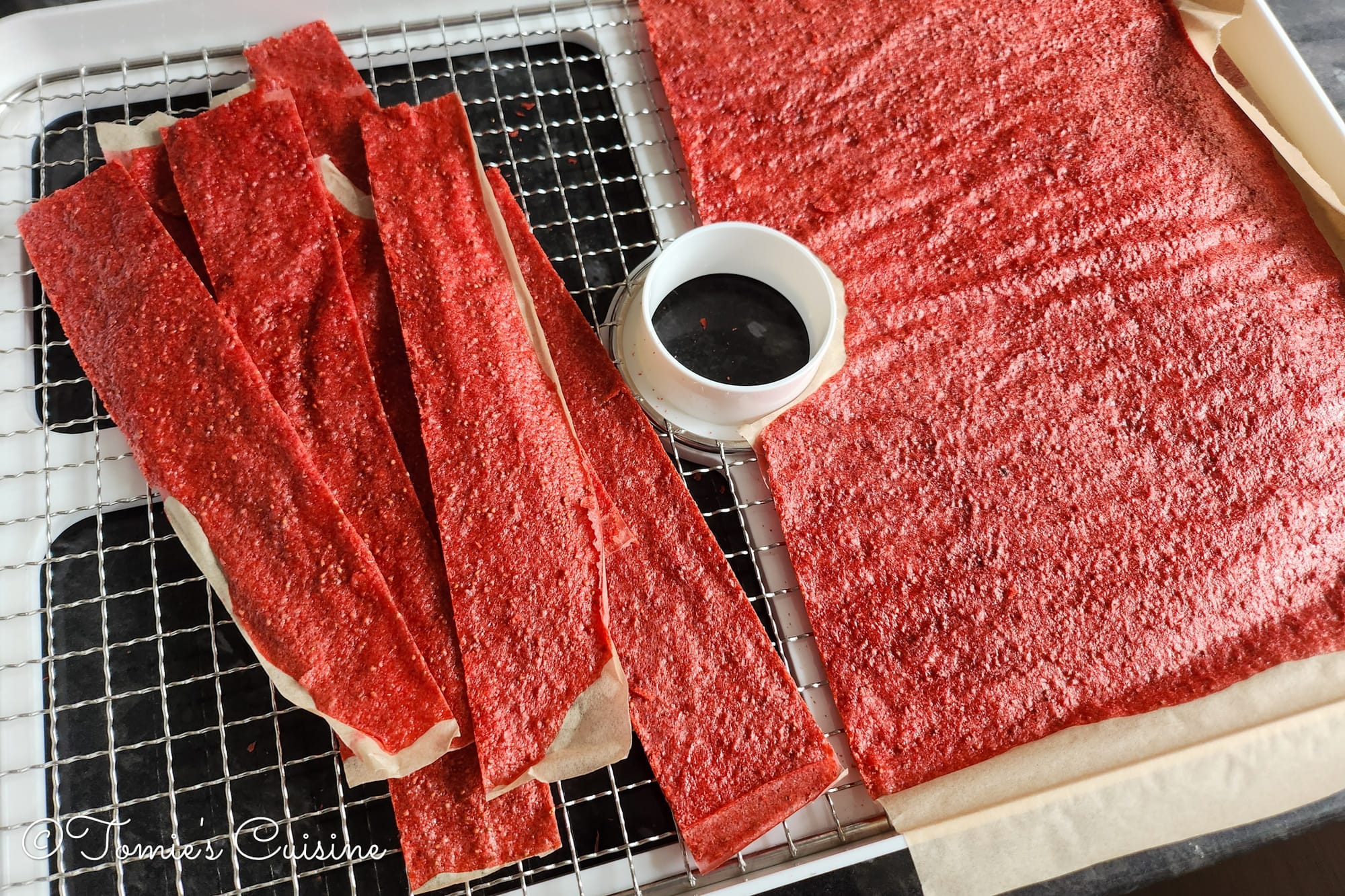
Ingredients
- 1kg of strawberry (use any seasonal or reduced fruit from the supermarket.)
- A tablespoon of maple syrup
Instructions
- Place the washed fruit into a blender with maple syrup and blitz until smooth.
- Spread evenly on the food dehydrator with a cooking sheet, set the temperature at 65C, and dry it for 10 hours or until it dries completely.
Beef jerky
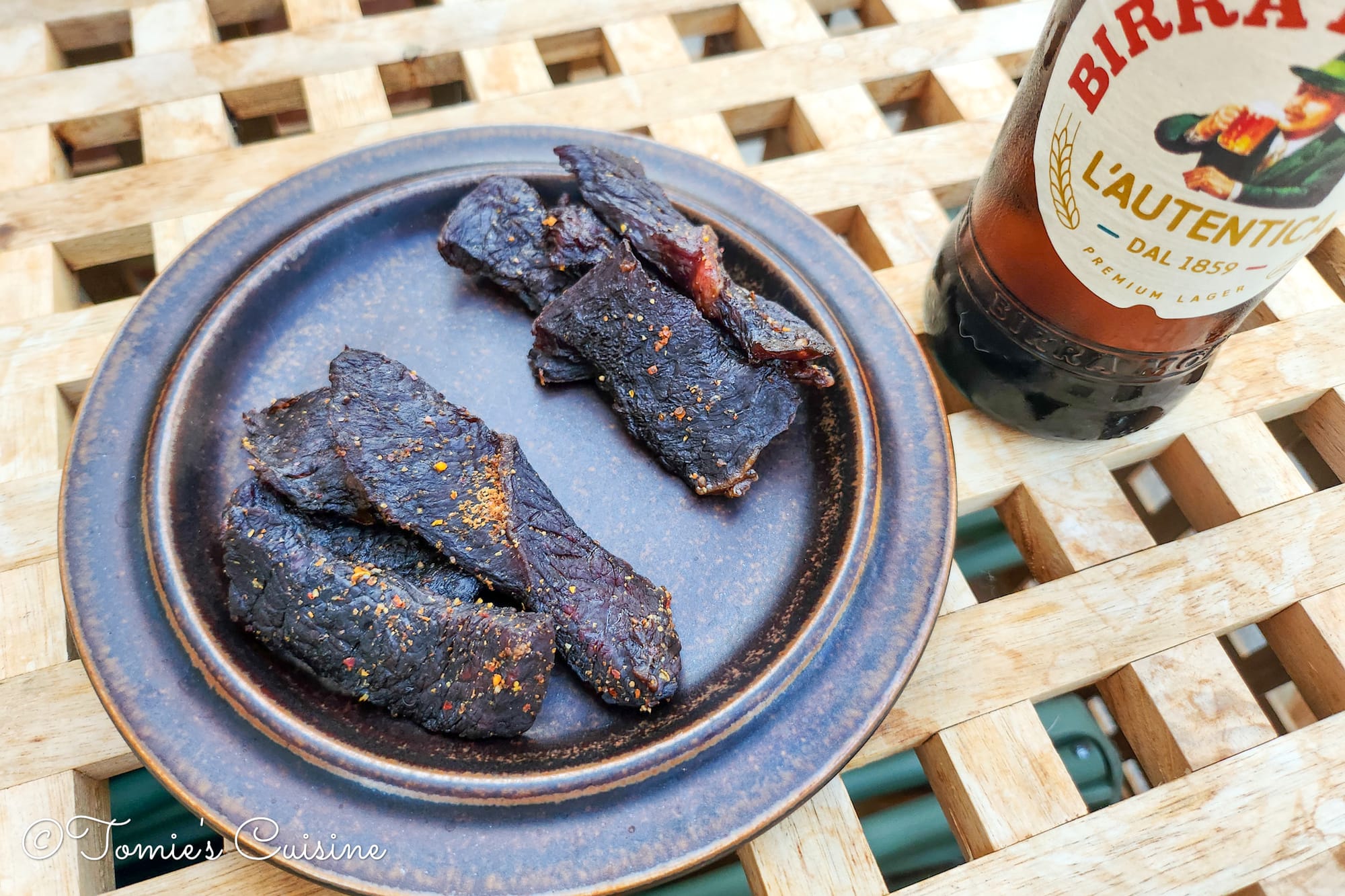
I have wanted to make homemade beef jerky since I started thinking about buying a food dehydrator – so it has been a while. Luckily, just like the fruit leather, it went well on my first try! We ate this during the hike as an apéro (aperitif) and during a short break.
Let me introduce the recipe.
Beef jerky recipe with food dehydrator
Ingredients
- Roughly about 450g of beef rump steak
For marinade
- Two tablespoons of soy sauce
- Two tablespoons of Worcestershire sauce
- A tablespoon of maple syrup
- Two cloves of garlic grated
- Some chilli powder
- Some coarse black pepper
Instructions
- Place all the ingredients for the marinade into a container and mix well.
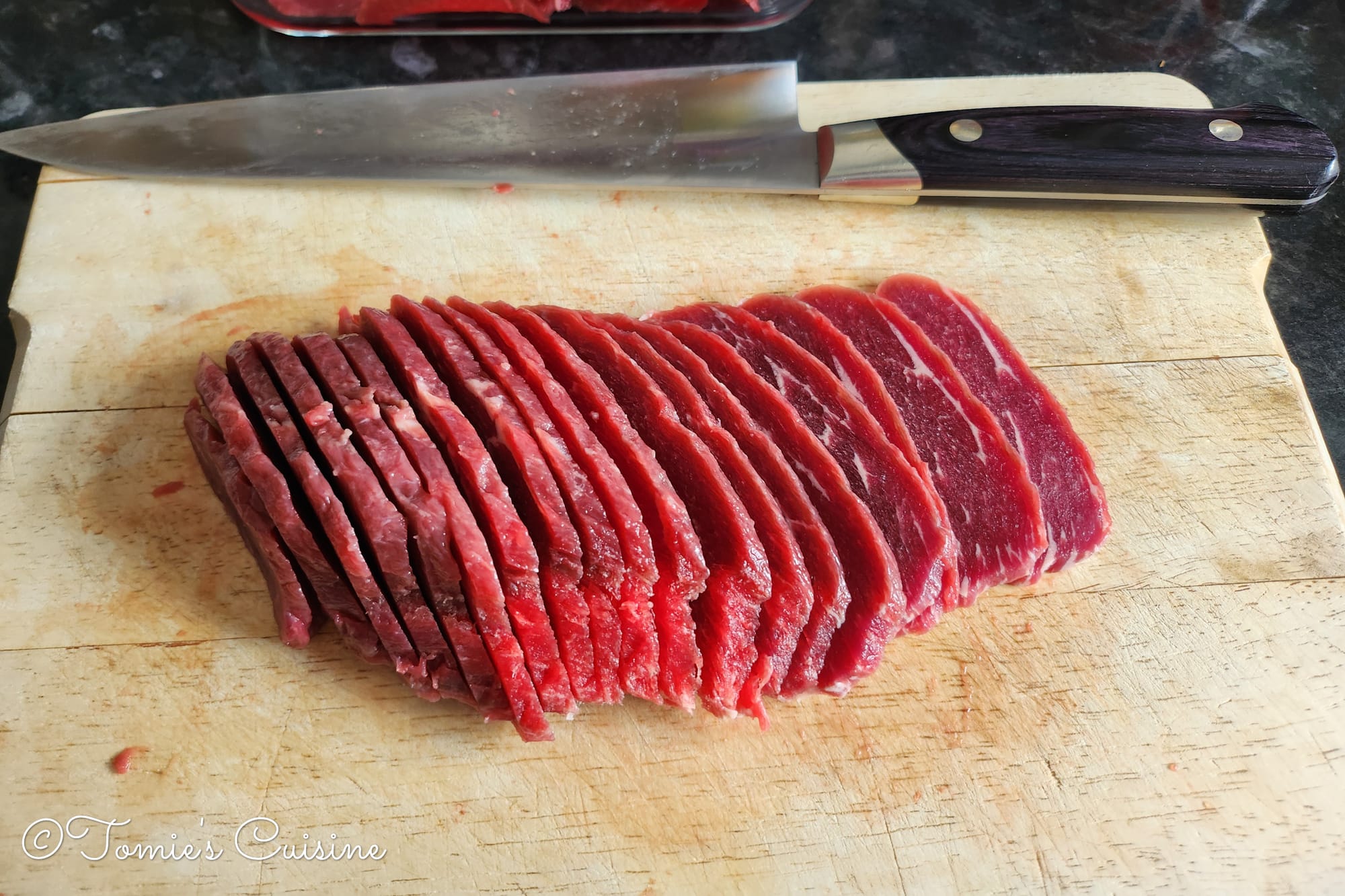
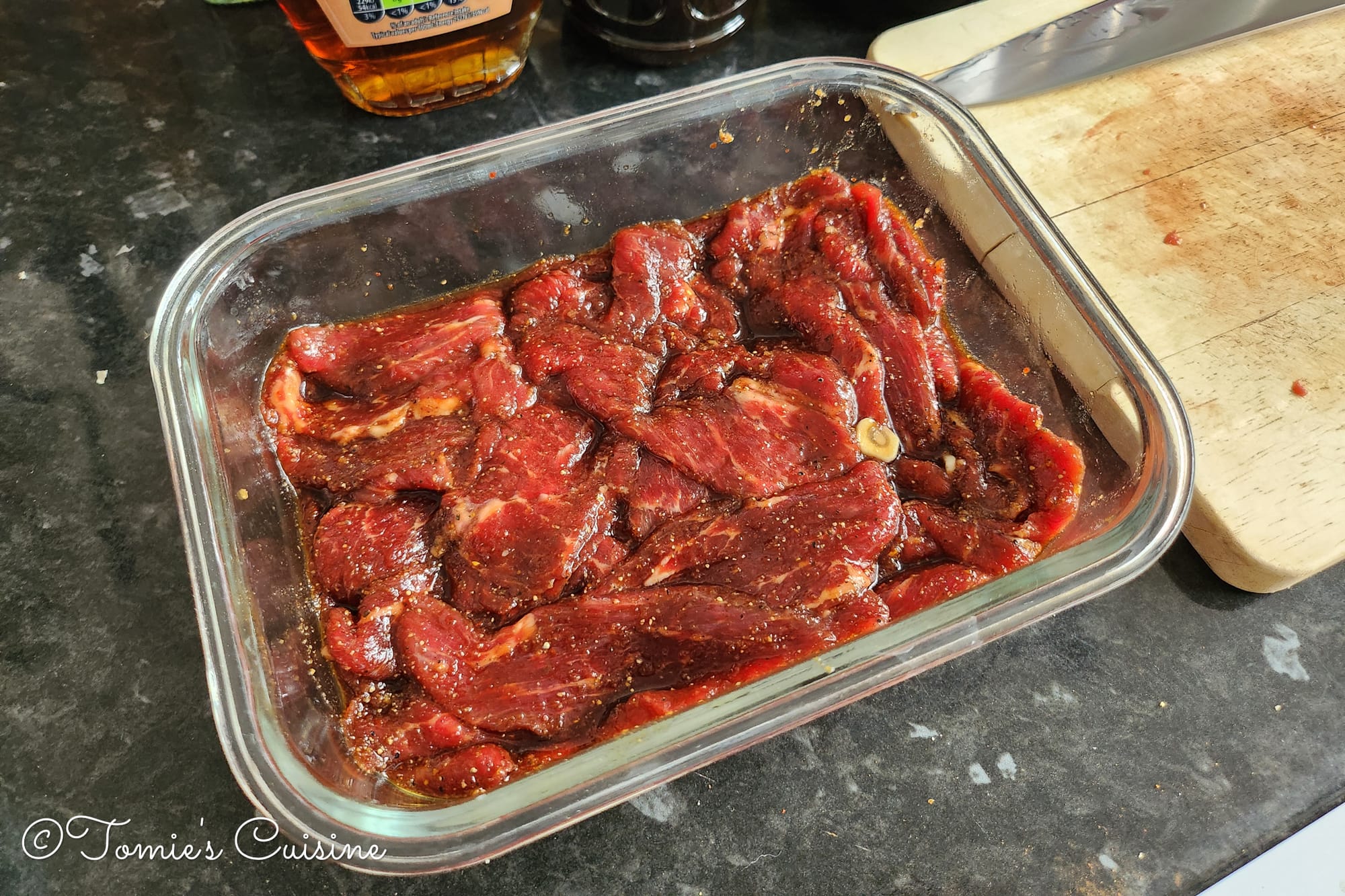
- Slice the beef. Add it to the marinade and refrigerate for at least two hours, preferably overnight.
- Pat dry the excess marinade from the beef with a tea towel or kitchen roll.
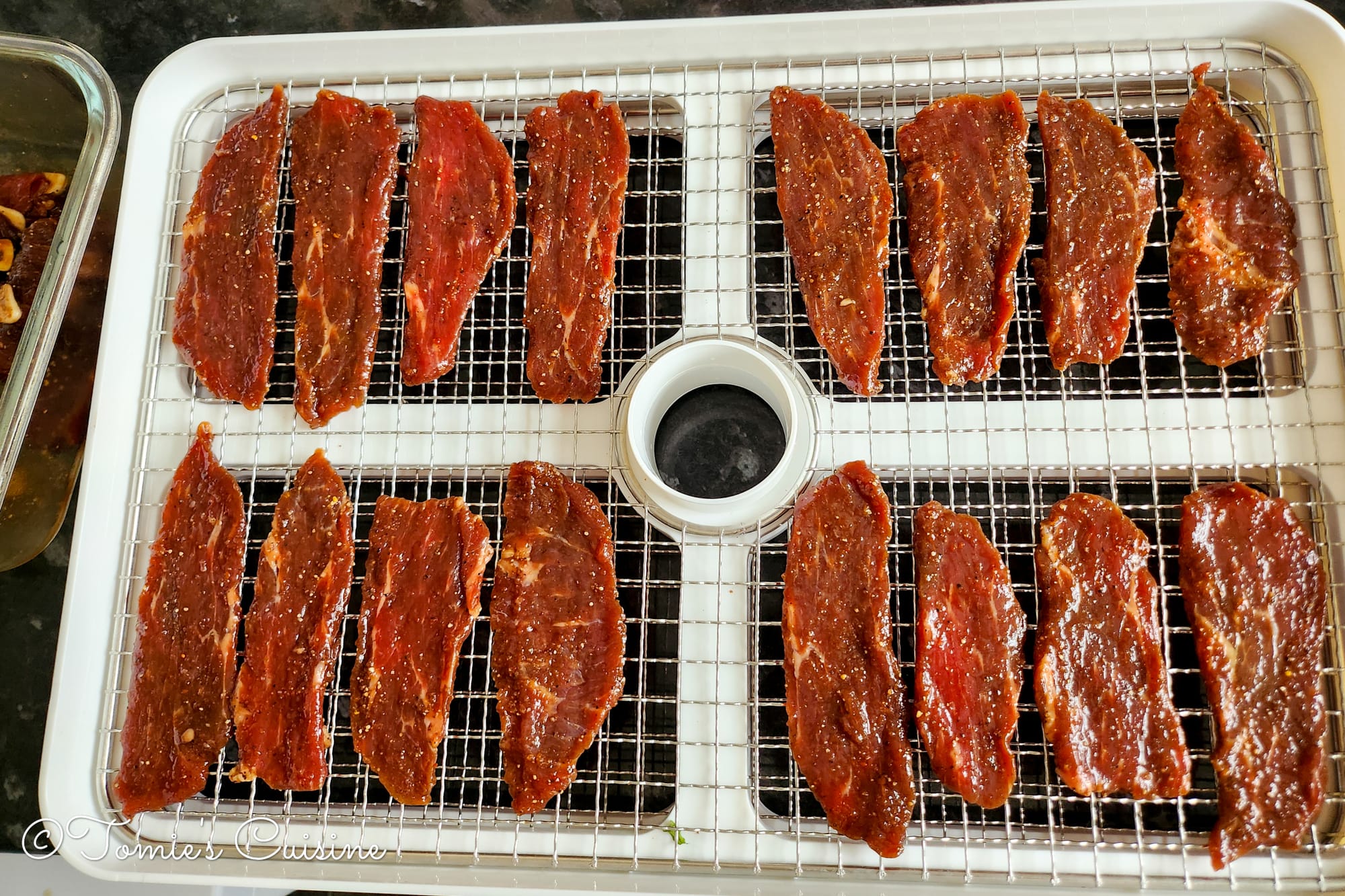
- Place on the rack and dry completely at 70C for 10 hours.
It’s a shame to throw away this marinade, so I boiled it to sterilise it and then marinated boiled eggs with it. It goes well with an ice-cold beer!
Dehydrated meal
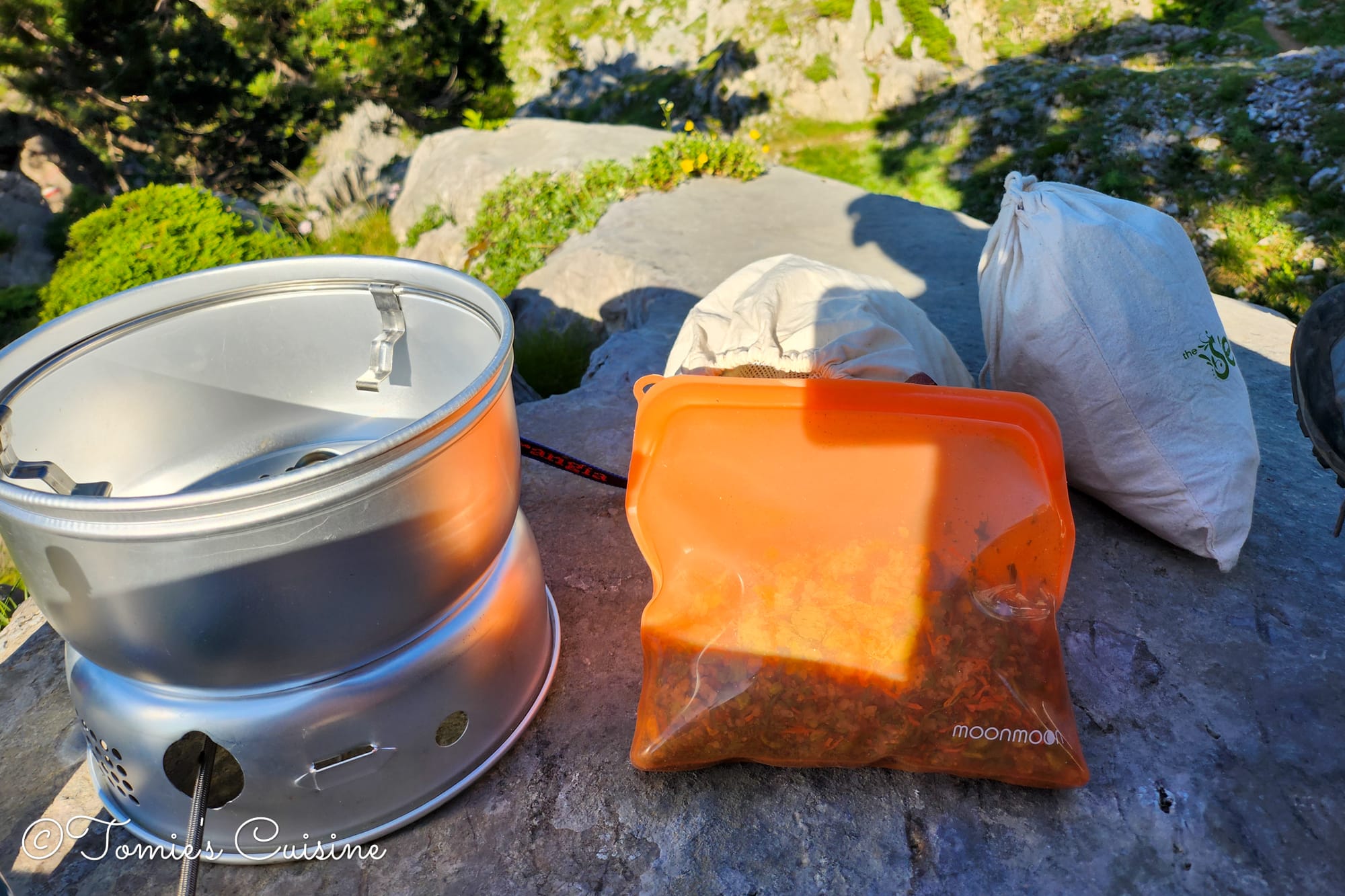
I watched videos on YouTube about long hikes, and some people were preparing homemade dried food with their food dehydrator. When we went hiking through the Pyrénées last time, we brought some dehydrated food that we bought from a camping store and some tinned food.
But the dehydrated food from shops is quite expensive (the cheapest one I have seen so far is over £4 for one person.), and we have to throw away the package, too. Since we have a food dehydrator, I decided to prepare some food for us to try!
This time, I made some bibimbap and ratatouille.
To cook our dehydrated meals during the hike
This cooker set was perfect for the five of us to prepare meals at the camp or on the go.
To filter water from the stream
This press was handy! The filter bottle made the water drinkable when we found a stream in the mountains. Since it’s mountain water, it was super fresh and much better than what we usually drink. Haha
To drink while on the hike and use the water while camping
Dehydrated meals require water, so we ensured we could carry enough water with us at any time.
Bambaw Insulated Water Bottles | Stainless Steel Water Bottle 750 ml
HYDRO FLASK - Water Bottle 946 ml (32 oz)
Source WXP Low Profile 3L Hydration Upgrade Kit
Bibimbap
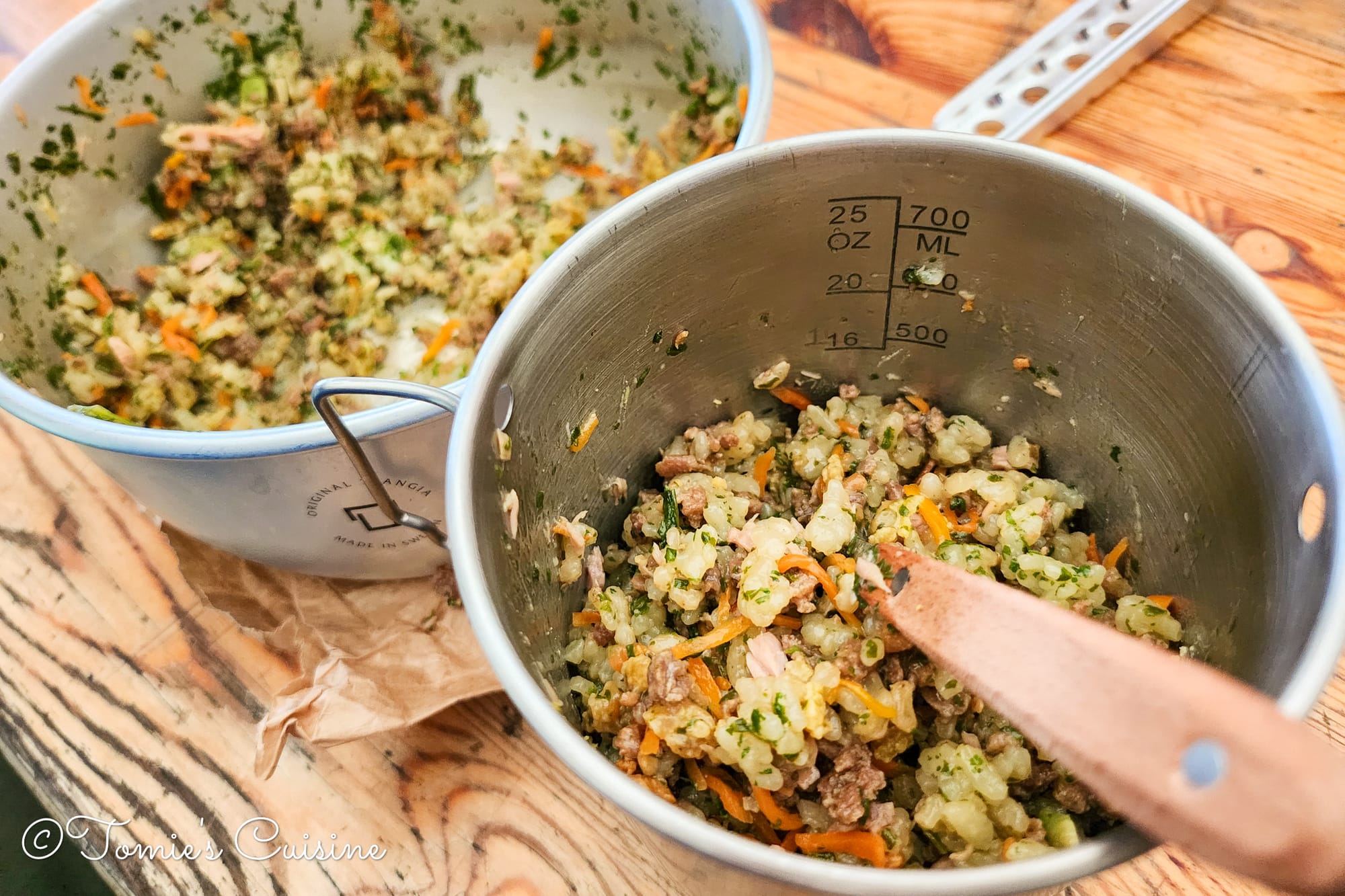
The bibimbap contains steamed rice, chicken mince, spinach, carrot, and egg. I cooked all the ingredients except spinach. Then I seasoned the chicken with soy sauce, sake, mirin, sugar, grated apple and garlic, and the shio koji condiments. The shio koji itself contains ginger, leek, and garlic.
Dehydrate the ingredients separately and mix them in the bag.
Let us know if you want to hear more about how to make bibimbap or how to prepare shio koji with these ingredients! You can read more about the benefits of shio koji here.
Washing cooked rice before dehydration
Once you’ve cooked the rice, rinse it with running water to remove some stickiness on the surface. Strain the rice water as much as possible with a strainer, then place the rice on the tray evenly with parchment paper or the silicone net for the dryer if you have one.
Ratatouille
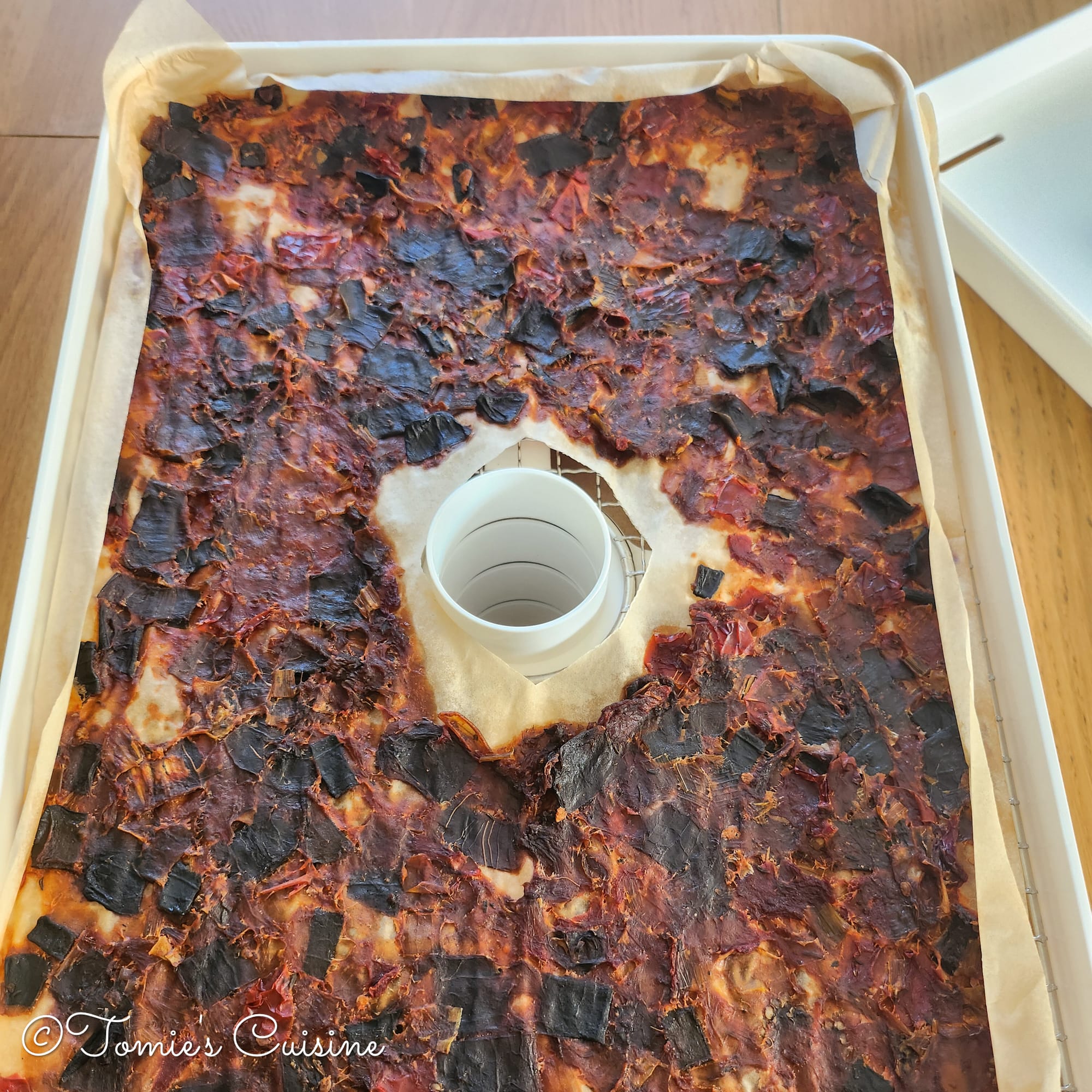
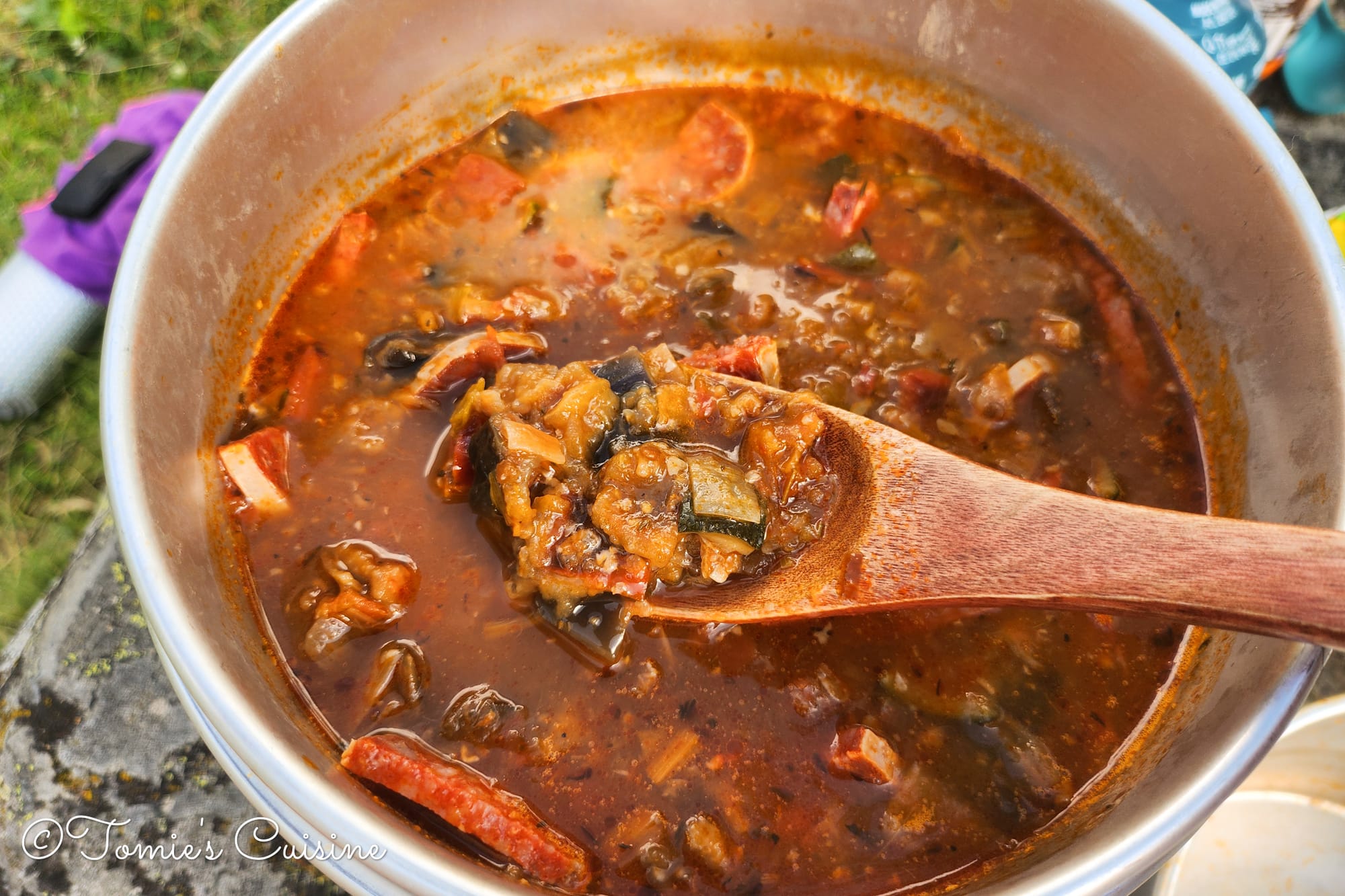
The ratatouille is very simple. It consists of summer vegetables such as tomatoes, aubergine, bell peppers, courgettes, onions, and garlic. I season them with my onion koji. Then, I put the ratatouille on the dehydration tray and spread it evenly.
In the Pyrénées, we found a local butcher selling delicious chorizo. We bought one and added it to the ratatouille. It was delicious.
I love making ratatouille with this pot
STAUB Cast Iron Roaster/Cocotte, Round, 24 cm, 3.8 L, Black
Both dehydrated meals went quite well, and my French family enjoyed it, too, so I will post the recipe after reviewing it again.
Huel Black Edition and Hot & Savoury
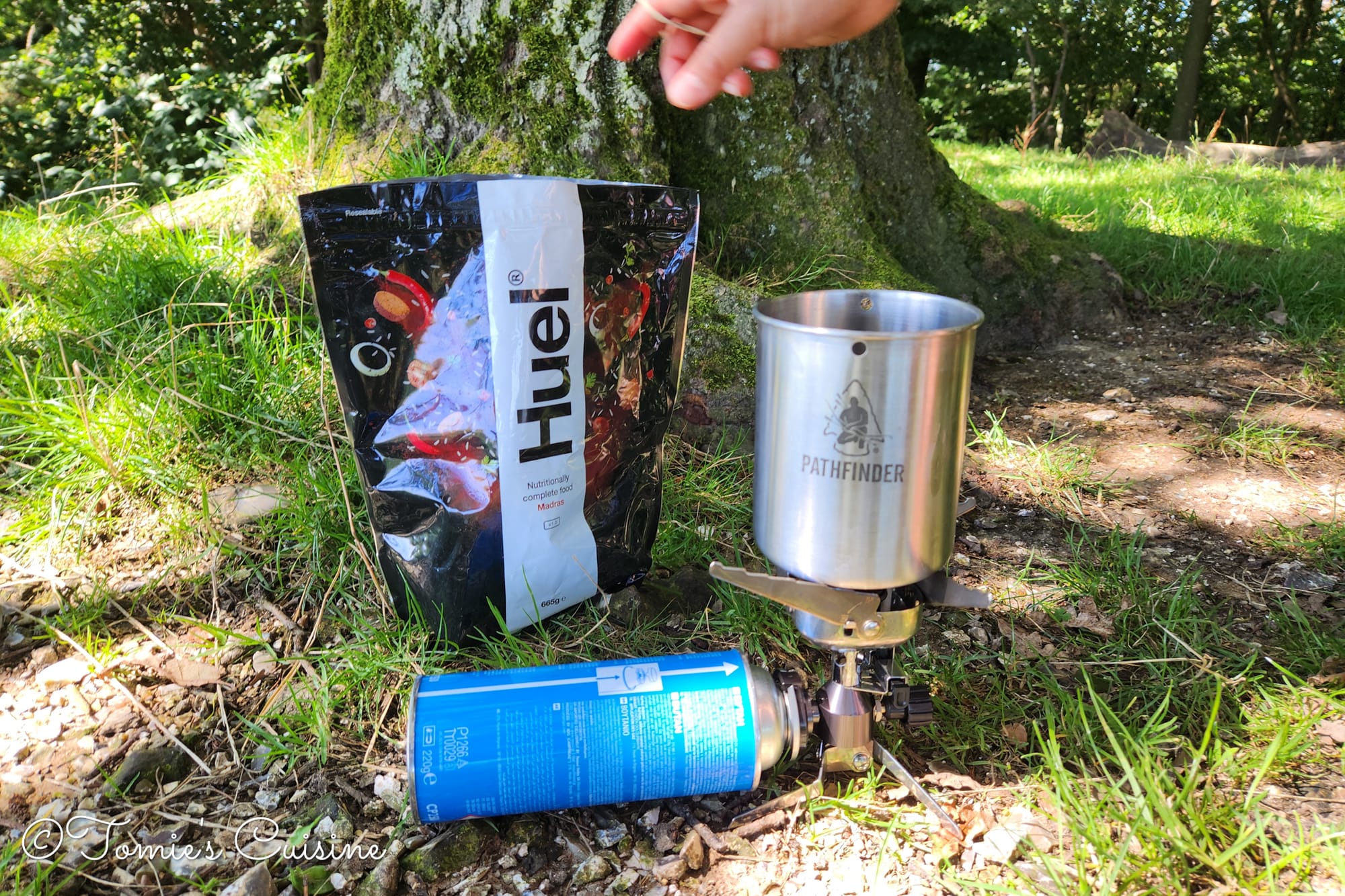
Obviously, this isn’t homemade, but we have been consuming Huel products for a while, especially my husband.
We brought four packets of Hot & Savoury and one Black Edition for five people, which were:
- Mac and cheese
- Pasta Bolognese
- Mexican chilli
- Madras
- Coffee Caramel
Those were very handy when we stopped for lunch and didn’t have time or space to cook. That said, we didn’t always use Huel, so we didn’t even get to open the Madras.
To cook the Hot & Savoury Huel, boil water, put a lid on, and wait about 3 to 5 minutes.
We also had Coffee Caramel for breakfast, mixed with fresh coffee, milk powder, and sometimes granola.
If you want to try Huel, use our referral link for a £10 discount.
What food container is more sustainable and light?
We used the silicone food bag we bought a few years ago (you can read our review here). It was pretty handy since it’s tough, and once we finished the content, we could use it for something else after washing it. However, it is on the heavier side for a container, especially since we wanted to make the backpacks as light as possible for the longer hike. So, there may be better solutions out there.
To store our food while on the hike
Moonmoon Reusable Silicone Food Bags
Closing words
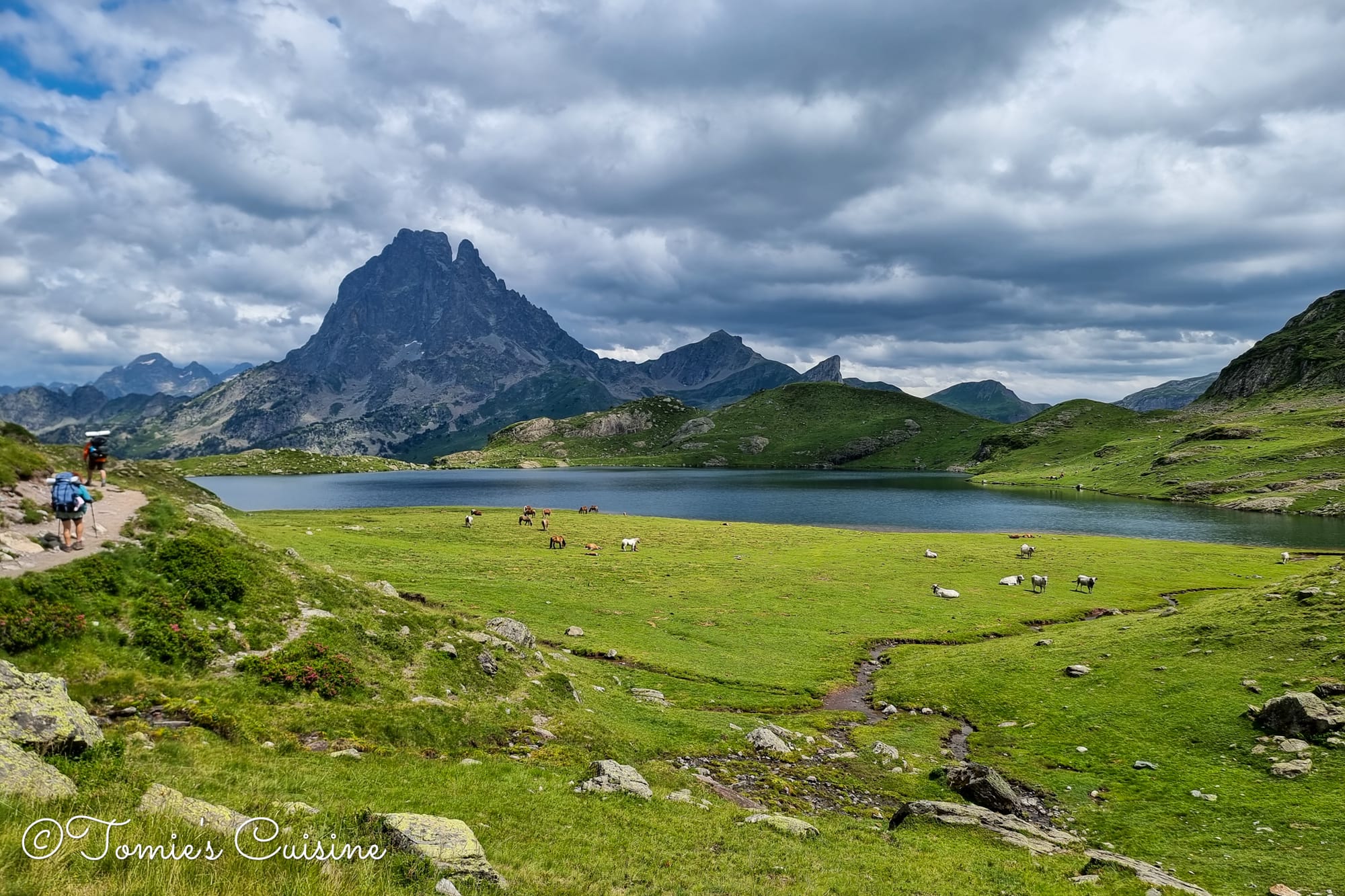
We hope this article is helpful if you’re planning to go on a hike or camping. It doesn’t need to be a long hike; going for a day hike with your favourite dehydrated meals is fun, too!
We’ll do another article on the tools we found useful while on the hike.
In the meantime, follow us on our Instagram, Pinterest, and Facebook pages. Don’t forget to subscribe to our newsletter so you don’t miss our future blog posts about other recipes and eco-friendly tips.

